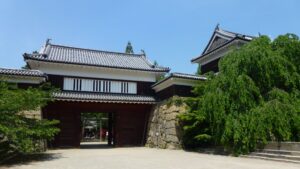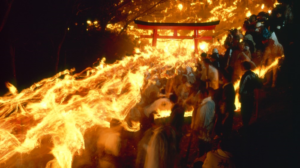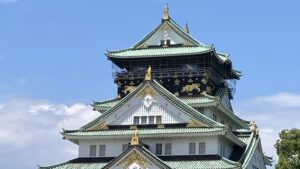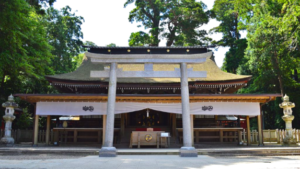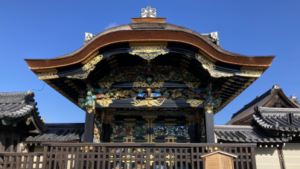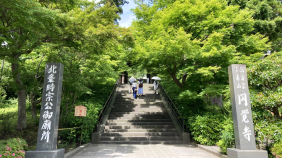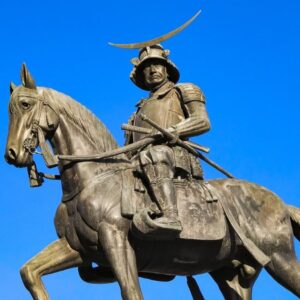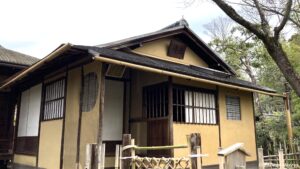Ueda Castle: The Fortress That Repelled the Tokugawa Army Twice
In the turbulent age of the Warring States period, when warlords vied for supremacy, a genius strategist, Sanada Masayuki, who rose from the rank of an ashigaru commander to warlord, built the formidable Ueda Castle, renowned for repelling the overwhelming armies of Tokugawa not once, but twice. Masayuki was described by the unifier of the […]
Kamikura Shrine: The Firefall of Mt.Kamikura Slope, a Down Dragon
Annually, on the 6th day of January, the New Year of the lunar calendar (February 6th), for over 1,800 years, the Oto-Matsuri takes place at night as a sacred festival of Kamikura Shrine. During this festival, around 2,000 men clad in white attire rush down the 538 steps from the summit to the base of […]
Siege of Osaka: The Last of Toyotomi & Begining of Tokugawa Era
Toyotomi Hideyori, A Wise Man In 1598, Toyotomi Hideyoshi (1536-1598, 豊臣秀吉), who had risen from a peasant to become the ruler of Japan as regent, passed away, leaving behind his five-year-old son, Hideyori (1593-1615, 豊臣秀頼). In 1600, the Battle of Sekigahara broke out between Ishida Mitsunari (1560-1600, 石田三成), a loyal vassal of the Toyotomi, and […]
Komaki and Nagakute Battlefield, Ieyasu's Strategy Toward Victory
Tokugawa Ieyasu (1543-16161, 徳川家康) laid the foundation for the 260-year Edo period (1603-1868) after a lifetime of numerous battles. His victory at the Battle of Komaki and Nagakute was later celebrated in the words of historian Rai Sanyo: "Ieyasu's power as a ruler of Japan was not the victory of the Siege of Osaka or […]
Kashima Jingu Shrine Enshrines the Diety of War, Takemikazuchi
Kashima Jingu Shrine in Ibaraki prefecture Enshrines the Diety of War, Takemikazuchi
Three Karamon Gates Reflect Hideyoshi's Authority as a Ruler
Kyoto is home to three national treasures of Karamon Gates at Daitokuji Temple, Nishi-Hongwanji Temple, and Toyokuni Shrine. These gates were relocated from Toyotomi Hideyoshi’s retreats, Jurakudai and Fushimi Castles. Toyotomi Hideyoshi (1537–1598, 豊臣秀吉) ended over a century of warlike period in Japan. The Karamon Gates feature the distinctive Karahafu, an undulating bargeboard on the […]
Engakuji Temple: A Monument to Japan’s Victory Aginst the Mongols
Engakuji Temple, ranked second among the Five Great Zen Temples of Kamakura, is located near Kitakamakura Station. It was founded in 1282, a year after Regent Hojo Tokimune overcame two Mongol invasions, intending to protect the nation, promote Zen teachings, and mourn for all war victims on both sides. Upon entering through the Sanmon gate, […]
One-Eyed Dragon, Date Masamune, The Great Samurai's Legacy and Beliefs
One-Eyed Dragon, Date Masamune: The Great Samurai's Legacy and Beliefs
Cherry Blossoms and Red Leaves at Hakodate Goryokaku Fort
Goryokaku Fort (五稜郭) is Japan’s first western-style star fort located in Hakodate. The view from the top of the observatory, situated 90 meters above the ground of Goryokaku Park Tower, offers a truly spectacular sight. The iconic five-star shape, filled with approximately 1,600 cherry blossom trees in spring and adorned with vibrant autumn leaves in […]
Samurai Tea Ceremony, Joan is The Best Teahouse to Visit
There are three existing tea rooms in Japan designated as national treasures. They are the Taian at Myokian in Kyoto built by a tea master, Sen-no-Rikyu, the Mittan at Daitokuji Temple by Kobori Enshu, and the Joan at Urakuen Garden in Aichi prefecture by Oda Nagamasu in his later life. Oda Nagamasu, also known as […]

